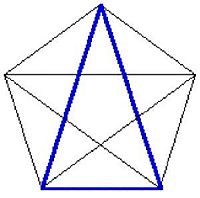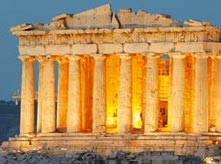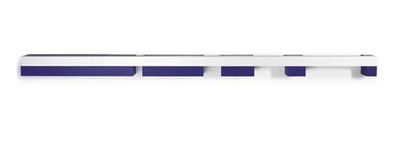Golden Ratio Exploration
From EscherMath
Jump to navigationJump to search
Objective: Explore properties of the Golden Ratio.
Suppose we start by drawing one small square, and attach another square to it on the right, making a 2x1 rectangle. Now draw another square along the long edge of the 2x1 rectangle, making a 3x2 rectangle. Continue this process, spiraling outward, until you're out of room on the page.
The process creates larger and larger rectangles by attaching squares to them, and could continue indefinitely.
- Here is a table showing the side lengths of each rectangle in the process:
Dimension of rectangle Ratio of the two sides 1 x 2 2/1 = 2 2 x 3 3/2 = 1.5 3 x 5 5/3 = 1.666666666 5 x 8 8/5 = 1.6 - Find the dimensions of the next two rectangles.
- Look at the list of the dimensions of the rectangles. How is the biggest number related to the two number in the row above it? Knowing this, continue the following sequence of numbers: 2, 3, 5, 8, 13,...
The sequence of numbers in the table is the Fibonacci sequence.
- The table shows the ratio of the long side to the short side for the first four big rectangles. Find the ratio for the remaining rectangles. Are the ratios approaching a number?
- Note that the rectangles changed shape less and less as the process continued (the ratios of long to short sides didn't change much). Suppose you want a rectangle that stays exactly the exactly the same shape when a square is attached.

This means the ratio
Solve this equation for . (Cross multiply and use the quadratic formula!) - Calculate the ratio of your height to the height of your navel. Do the same for four friends. How does this number compare to the ratios you have found before?
- This triangle is called the Golden Triangle. Compute the ratio of the length of the side to the length of the base.

- The Parthenon in Athens, Greece, may have been built according to the golden ratio. Measure the width and the height of the west face (shown below). How close is it to a golden rectangle?
- Discuss how the Fibonacci numbers appear in Mondrian's Broadway Boogie Woogie and Judd's Untitled.

 |

|
| Piet Mondrian, Broadway Boogie Woogie, 1942-43. | Donald Judd, Untitled, 1970 |
Handin: A sheet with answers to all questions.



